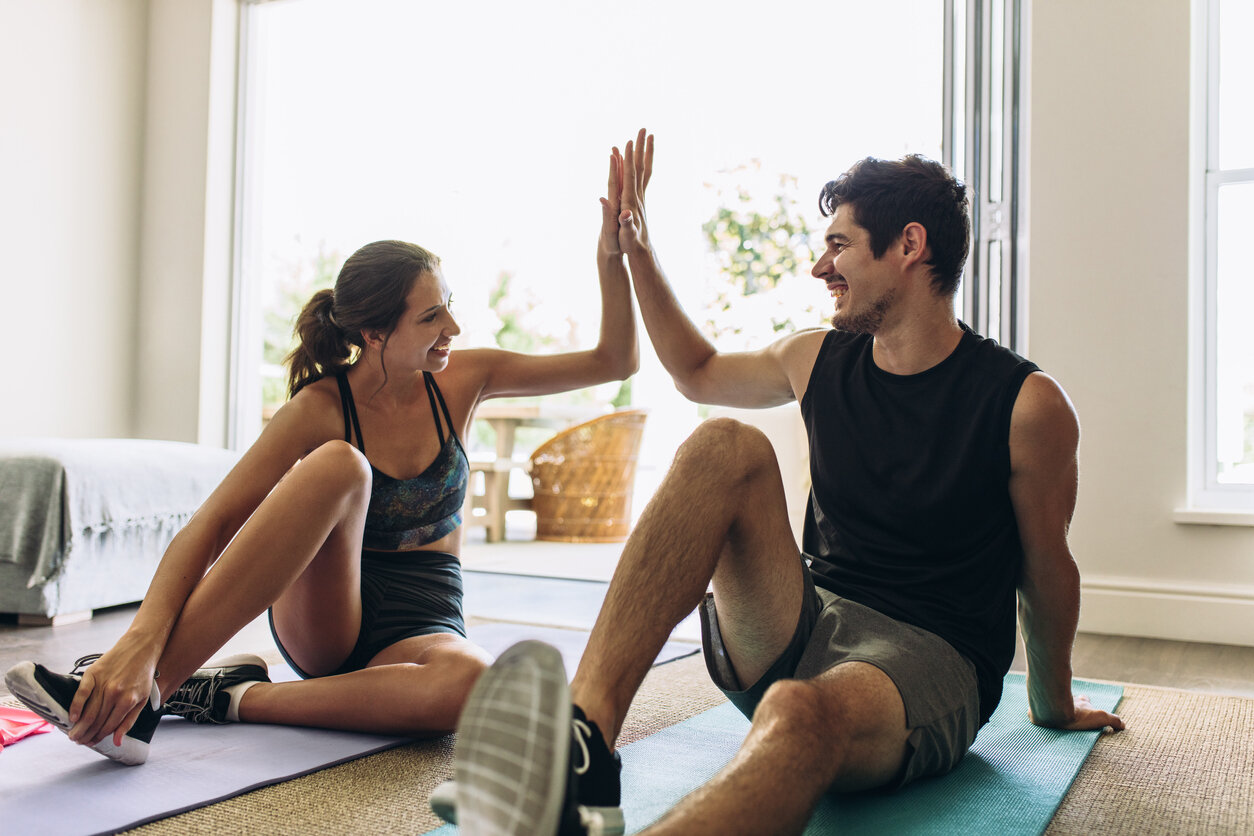Haven't Exercised in Months? How to Start Working Out Again After a Long Break
Advertising Disclosure- Our content is free because we earn a commission when you click or make a purchase using our site.
Facing the nagging thought you should start exercising again? You are not the only one. Lots of people fall off the exercise wagon from time to time. Life happens, you know? Work gets busy, kids become demanding, and global pandemics shut things down (yep, that’s a new reason and a very relatable one at that).
Fortunately, if you’re reading this, the desire to get back at it has already kicked in. Motivation begins with fighting your inner couch potato. Drive takes over as you take action to regain control of your health and wellbeing.
But how do you prepare to commit to the hard work that comes with self-improvement? Here are some tips to help you get back on track.
1. Discover Your Why
Because you’ve worked out in the past, you know there’s a long list of exercise benefits: weight loss, heart health, increased energy, better sleep, reduced stress, and mood elevation. Plus, regular exercise prevents disease and strengthens immunity — who can debate the importance of that right now?
What matters to your recommitment, however, is your why. Don’t fool yourself with the notion that all of those benefits are important (although on some level, all of them are). Instead, consider why you want to exercise again. What is renewed effort about for you?
For example, this year, I’m all about strength — stronger muscles, stronger bones, and a stronger psyche. So my daily yoga practice reflects that. My husband is all about heart health and weight loss. He’s making different choices by walking each day, often for miles. And my son wants to safely socialize while expending pent up energy, so he’s playing basketball with the friends in his particular bubble.
The key is putting thought against why an established workout routine is important to you. What are you seeking? What matters most to you right now?
Gain clarity for yourself by making a list or journaling that out. If you have more than one goal, ask yourself, which is your priority?
When you think you know what that why is, ask yourself this: why is that important to you? Why is that your why? (For example, I am currently focused on strength, physical strength. Why is that important to me? If I don’t strengthen up and maintain that strength as I age, I will not live the quality of life that I want to live. That’s my why.)
2. Consider Your Options
My current workout preferences have come after years of sampling. In the past, when I wanted to step out of my comfort zone, I cross-trained at Orange Theory and sweat it out at Hot Yoga. Before that, I worked with a personal trainer and attended classes (e.g., Spin and Zumba) at Edge Fitness or Anytime Fitness. I’ve been a certified aerobics instructor who introduced a Reebok Step Workout at Gold’s Gym. And in high school? I was a runner, competing in track meets and taking part in 5k events.
There’s no one way to work out. There’s no “one size fits all” exercise program. And many workout streaming platforms like Openfit have a variety of options so you can experiment with different styles without even leaving home.
When you’ve been on a hiatus, what better time to reinvigorate your passion for exercise than to try something new, something that compels you and feels straight-up interesting to you today.
3. Create a Habit
Most likely the reason you fell off the exercise wagon in the first place is because your habits were disrupted. That job, that child, that stay-at-home order… you had worked hard to build something, and then BAM, the pressure increased and your stress response was to choose the path of least resistance.
Snap back from that by building a habit that fits into your current routine. Figure out what time of day will work best for you now, then be consistent. Set the precedent that working out is what you do at that time each day. Eventually, it’ll become automatic.
Experts in habit formation recommend committing to a new exercise routine for 30 consecutive days. Start with a simple action (e.g., if you want to lift, start with a low weight; if you want to run, start with 1/4 mile). Choose something small that you can do daily and build upon it as you gain confidence and momentum. Small steps towards a goal get you going in the right direction without being overwhelming and demotivating.
You can (and should) set reminders for yourself. Our phones and Amazon Echos are great for this. I’m constantly asking Siri and Alexa to remind me to do things these days. You might also track your progress in a habit tracker, a daily tick-sheet or check-list that gives you the visual reward that you are working towards achieving your fitness goals.
Working exercise into your current routine will allow for the growth and improvement you are seeking. As motivational speaker Jim Rohn once said, “Motivation is what gets you started. Habit is what keeps you going”.
4. Enlist a Buddy
Friends. Accountability partners. Studies show that lining up others to help you meet your goals means you’ll succeed and have more fun.
Several times a week I log-in to a Zoom call and do yoga with friends. My walks are almost always with a friend or family member. I have not been above asking a friend to drive me to the gym for a pre-dawn spin class or to meet me at my house for an early morning walk.
There is nothing like a human being to hold your hand metaphorically and mentally hold you accountable. If you don’t have someone that has goals that align with yours, personal trainers do a stand-up job. And you can even find that support virtually thanks to apps like Openfit and Caliber.
5. Gear Up and Go
The fun part of reinvigorating a workout routine is the shopping, am I right? I mean, who doesn’t love the squeaky clean look (and admit it, the smell) of a new pair of sneakers, or the snap-back elasticity of a new pair of workout pants?
Before you begin, consider what you need to set yourself up for success. Or think about a potential reward for completing your first 30 days. Last spring, I kicked up my home yoga practice with some new blocks. My friend got herself some enviable new boxing gloves when she signed up for her first kickboxing class.
Before you go down the rabbit hole of online shopping, take a minute to commend yourself. Your motivation to exercise brought you here. Your drive will get you to take the next steps on your journey. And your effort, the effort you know you have because you’ve exerted it before, will take you the rest of the way towards meeting your workout goals.
And please, don’t forget, if anything has changed for you physically or emotionally in the last few months of your hiatus, consult your physician to make sure the habits you build are the right ones, helpful and not harmful to your health and wellness.
More Articles You Might Like:














Is boxing good cardio? Absolutely. Is boxing cardio or strength training? It’s both! Boxing is the perfect fitness activity for any workout program whether your goal is to build strength, lose weight or just add variety to your routine. Find a heavy bag and give boxing a shot!